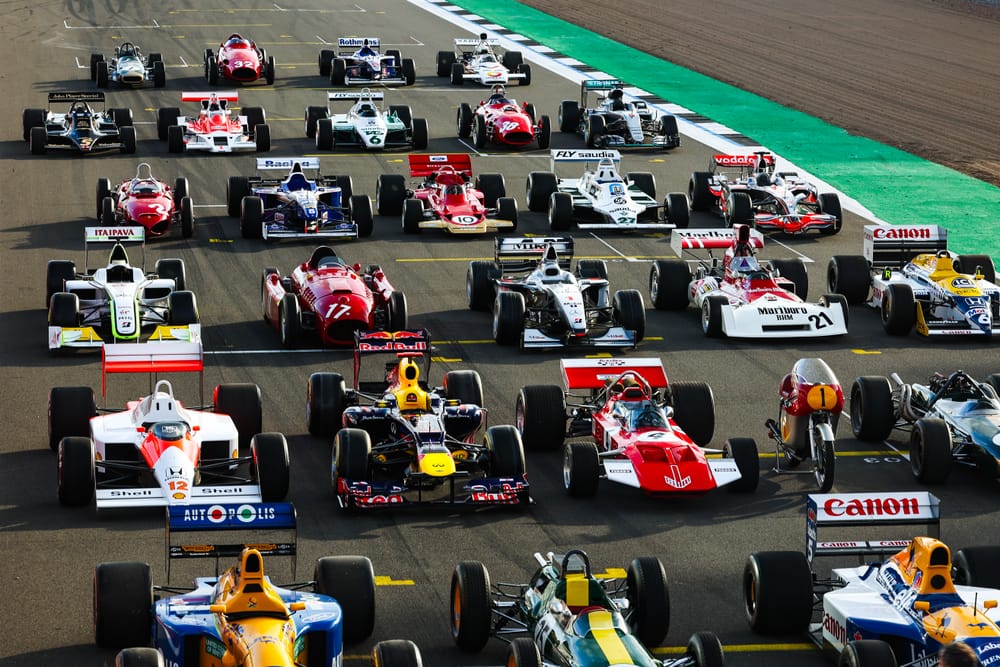Size matters in Formula 1. F1 cars have expanded in size and grown in weight significantly in recent times, hence the push under the 2026 regulations to roll that back.
However, the Silverstone Festival, a three-day historic extravaganza at the home of the British Grand Prix last weekend, brought the reality of that enlargement to life and highlighted the complexities of doing so.
Silverstone’s centrepiece was the World Champions Collection, a gathering of cars representing the F1 title winners. This was jaw-dropping in its variety and scope, a unique gathering never seen before and unlikely ever to be reconvened, but what struck me was that it represented a living history of the last three-quarters of a century of grand prix car evolution.
One image captured this remarkable achievement, staged by Silverstone placing a car that represented each of the 10 British world champions on the start/finish straight.
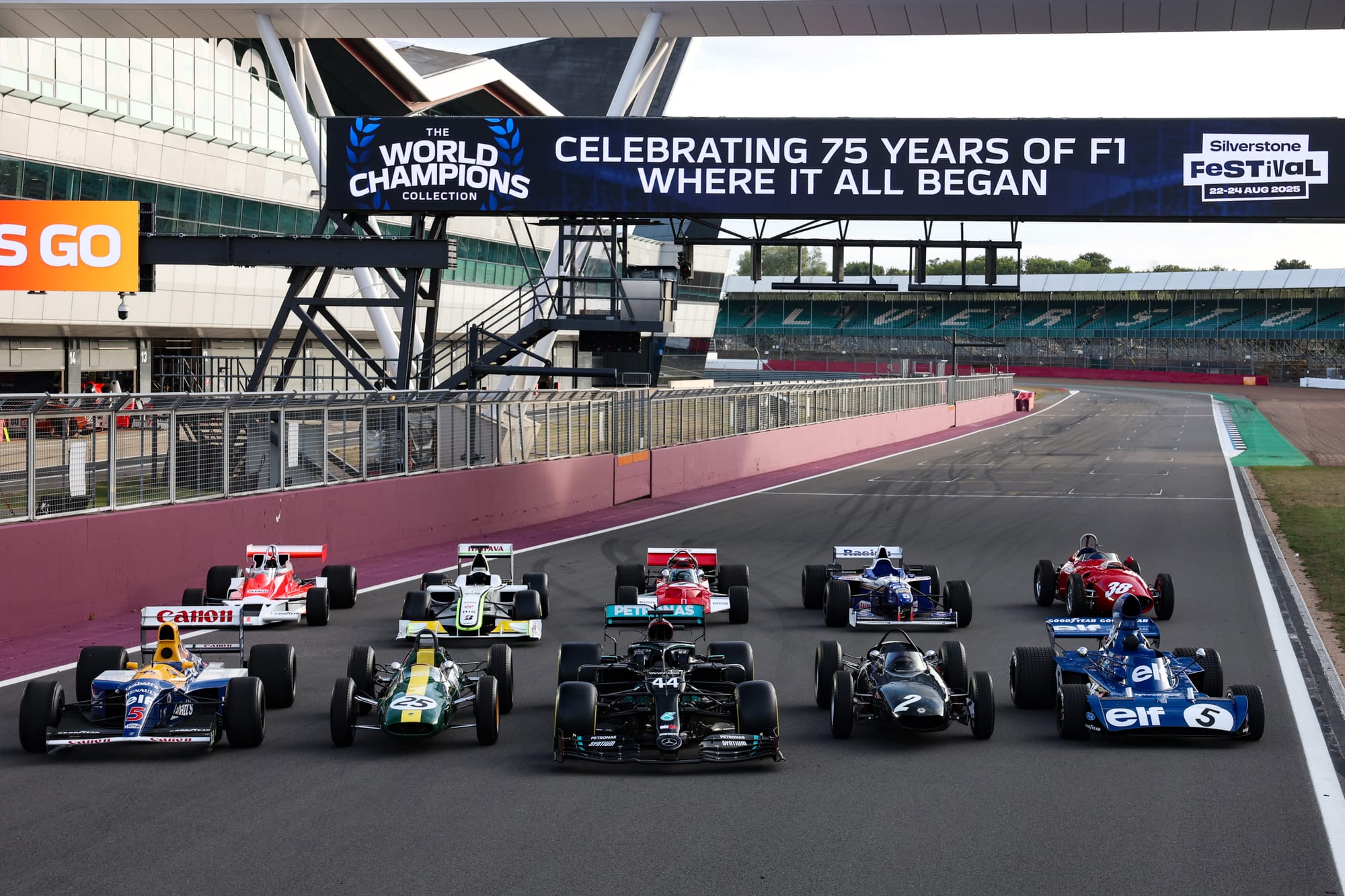
Take a look at Lewis Hamilton’s 2020 title-winning Mercedes W11 in comparison to the cars around it. At first glance, it resembles a Photoshop catastrophe with scaling awry. It is, of course, nothing of the sort - F1 cars today are gargantuan. That even made it a bit of a squeeze to get the later cars into the display tent!
“It’s a history lesson,” says Mark Constanduros, who put in a Herculean effort to put together this display. “If you start at 1950 and walk that line from the start, you see how Formula 1 has changed and developed. You go from the front-engined Italians that dominated the early ‘50s, to the British rear-engined cars. Then you go into slicks and wings, then the sponsorship kicks in, the technology, but also how the cars have changed in size.
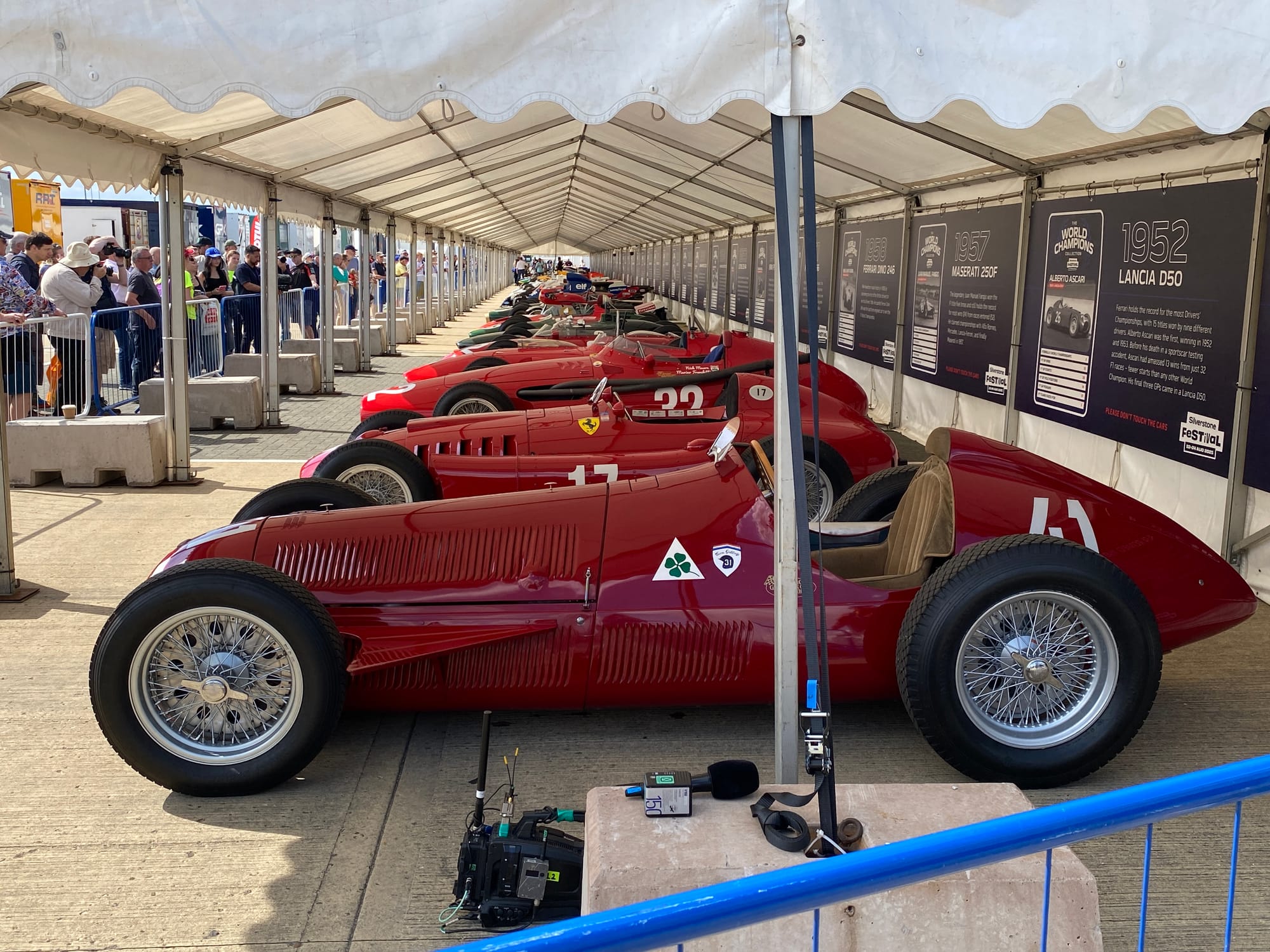
“We did a measurement of the cars and the Alfa [Romeo 158, of 1950] is three paces long, whereas the Red Bull [RB18 of 2022], is five-and-a-half. The Red Bull only just fits under the marquee, whereas there’s plenty of space around the Alfa.”
It’s no surprise to see the Lotus 25 that Jim Clark took to multiple victories on his way to the 1963 world championship looks tiny next to the Mercedes. That’s a car from the 1.5-litre era (1961-1965) when F1 cars were at their most compact and, to my eyes at least, elegant but too small.
But even taking into account the perspective of the photographs, the 2008 McLaren-Mercedes MP4-23 seems a different category of car. So, too, does Damon Hill’s 1996 title-winning Williams FW18. However, the Williams FW14B of 1992 is striking in comparison, as it looks much the same.
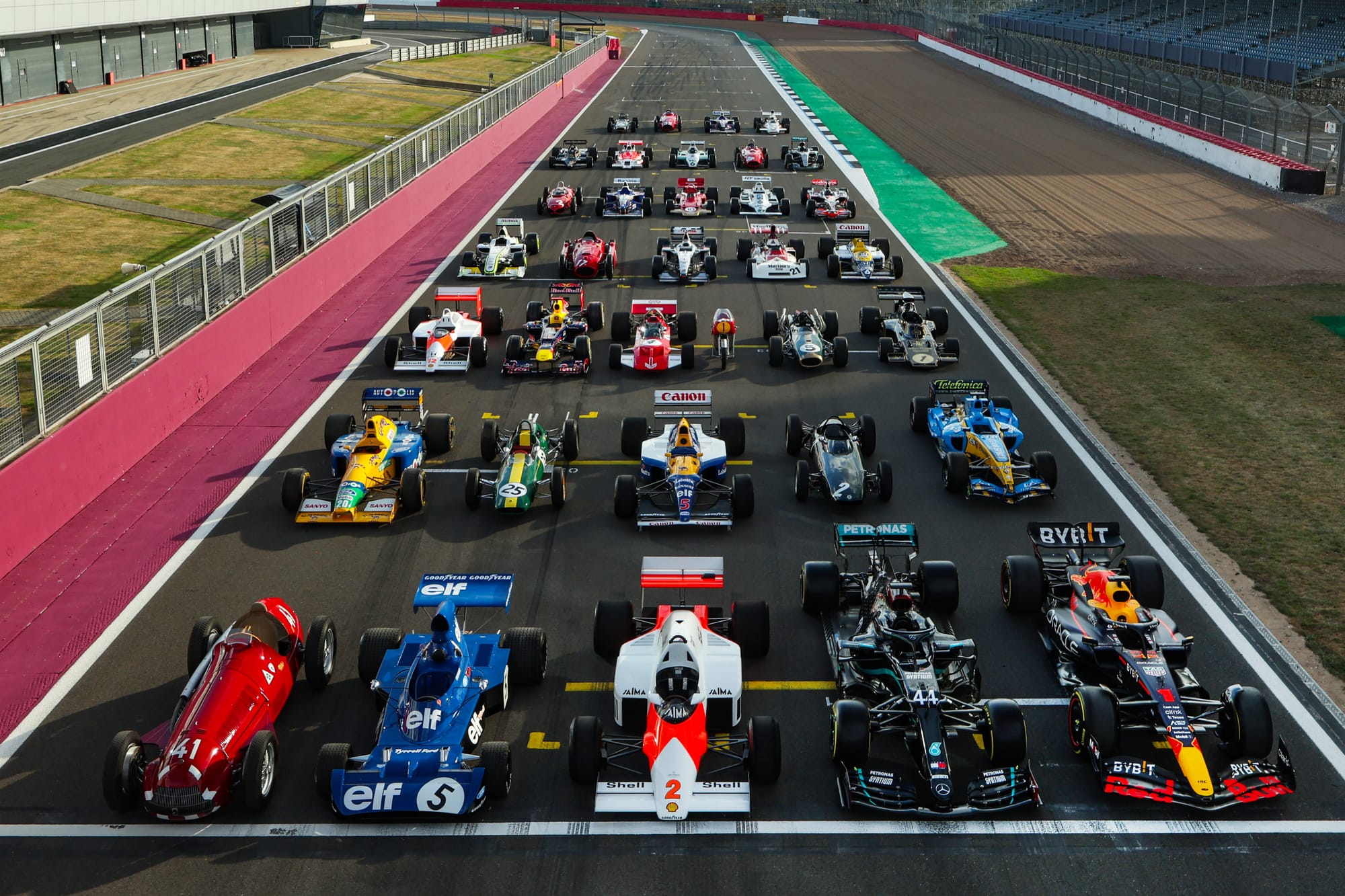
Actually, it’s wider as the 1992 regulations permitted a width of 2.2 metres compared to today’s two. By comparison, the 2008/9 cars were 1.8 metres wide. The question is, what is the correct size and weight?
Answering that is relatively straightforward. Ideally, F1 cars would be significantly lighter because that allows them to dance around on track to the delight of those watching. Watch footage of a car of, say, 25 years ago and the turn in looks visibly quick and sharp. It looks like a responsive racing car. Today’s F1 cars are extraordinary pieces of kit and faster over a lap, but they are lazy dynamically. And that means the process of turning in, loading the car up, is longer. It’s still impressive, just not as attention-grabbing as it once was to the fan in the grandstands or watching on television.
This means the answer to the ideal weight would be somewhere between the 505kg minimum weight of the car without driver in 1992 and the current regulation of 800kg including mandated driver weight. In 2026, that drops to 724kg plus what’s called the nominal tyre mass, a figure that’s yet to be finalised but likely in the vicinity of 40kg. Realistically, F1 cars are never again going to get down to the 1992 weight level, but it should be a long-term objective to continue to chip away at the minimum weight. The ’26 figure will be difficult to achieve at first, although teams will get to it because that’s what F1 teams do. However, it’s a number I would like to see pushed even lower, for reasons argued in this article.
For more on Silverstone Festival, join The Race Members' Club on Patreon and get Edd's pick of his top 10 cars and his audio diary - get a period of free Patreon access by taking The Race Fan Census
The weight situation is complicated by competing agendas. There’s talk about greater controls or standardising of certain non-competitive components, which risks making weight targets harder to hit. The existence of open-source components, designs that can be produced by teams but must be shared and useable by rival teams, is a mechanism to make that lightening possible while keeping costs down across the grid. However, it’s not much of an incentive to do such lightweighting if everyone can copy it. So this is where there are competing objectives that must be balanced. Longer-term, the increasingly loud arguments for simplified engines, potentially with reduced ERS, could allow for the power unit weight to be reduced. That might also have an impact on the overall car size.
And this is a question of proportions. While the 1992 Williams is 20cm wider than the current cars, it’s shorter. In terms of the wheelbase, current cars are limited to a maximum of 3.6 metres. The Williams is just under the three-metre mark, something that you can see clearly in the remarkable photographs showing the wider collection on the track, in particular the overhead view.
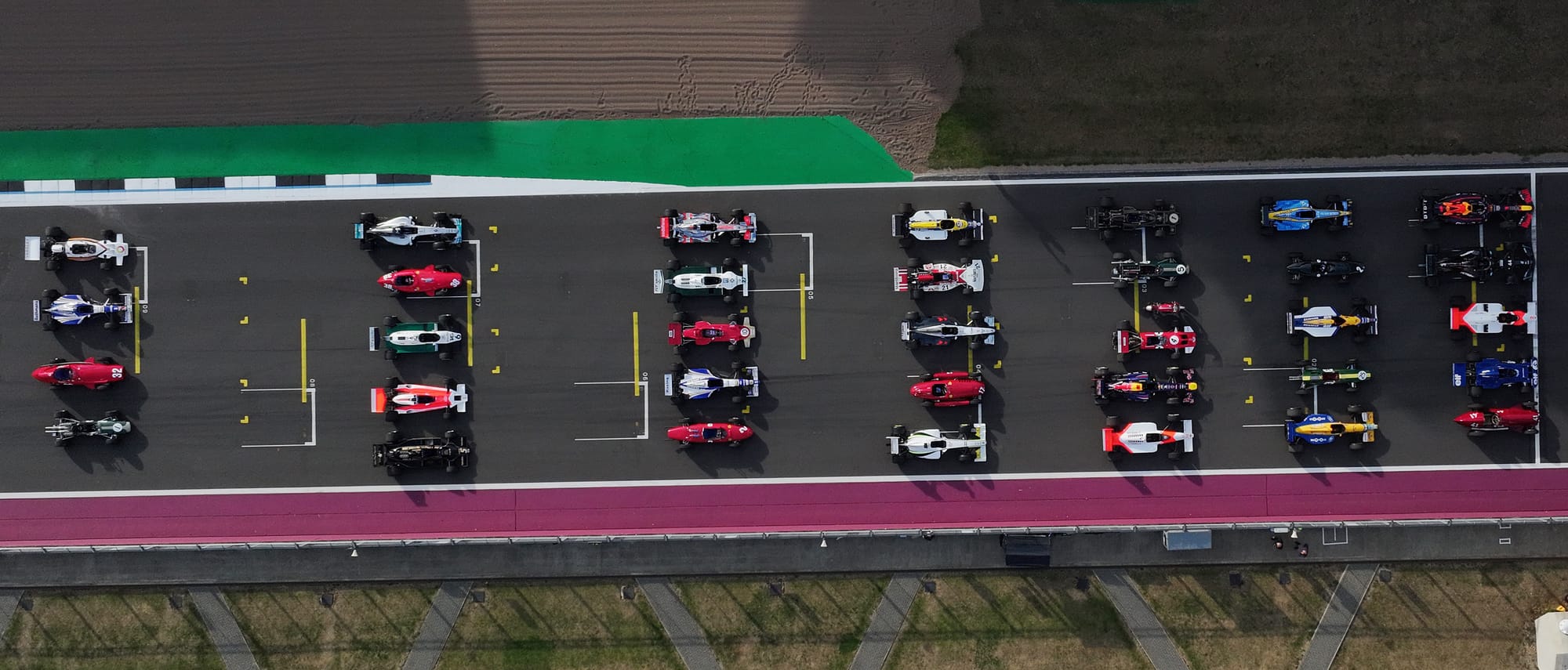
That’s significant because shortening the car reduces that laziness on turn-in. As ever, improving designs can be tackled in different ways so pathways to reduce the length of the cars could improve that sharpness and also shave off some weight. That push, too, needs to drift into the aerodynamic parameters of the regulations.
What really matters is that the car looks right. Mostly, cars are only going to be racing with their peers so the ideal car doesn’t need to be optimised for a set-up shot on the Silverstone start/finish straight. However, part of looking right is how they feel to drive, because if they feel responsive to the drivers they will look it too. Everyone would have their view of the correct proportions, and while it seems to me that the 1992 car is about right I’m aware that my age means that’s the period when my expectations were formed. Someone 20 years older than me might well point to the James Hunt McLaren M26 in the photo, and another 10 years older perhaps the Clark car. Aesthetics are in the eye of the beholder.
What rulemakers should have in mind when they are feeding in the desire to make the cars lighter and smaller in future regulations is that while proportions do matter and so, too, do the characteristics. It’s important the cars look good, and you can argue that making the cars narrower will help overtaking although that is a minor part of the equation with many other factors vastly more significant.
Looking even more spectacular in motion than they already do, which isn’t realistically achievable by having cars sliding around as they once did, can be delivered by pursuing that razor’s edge, on-the-limit poise on track. The 1992 Williams certainly achieved that despite being even wider than today's cars.
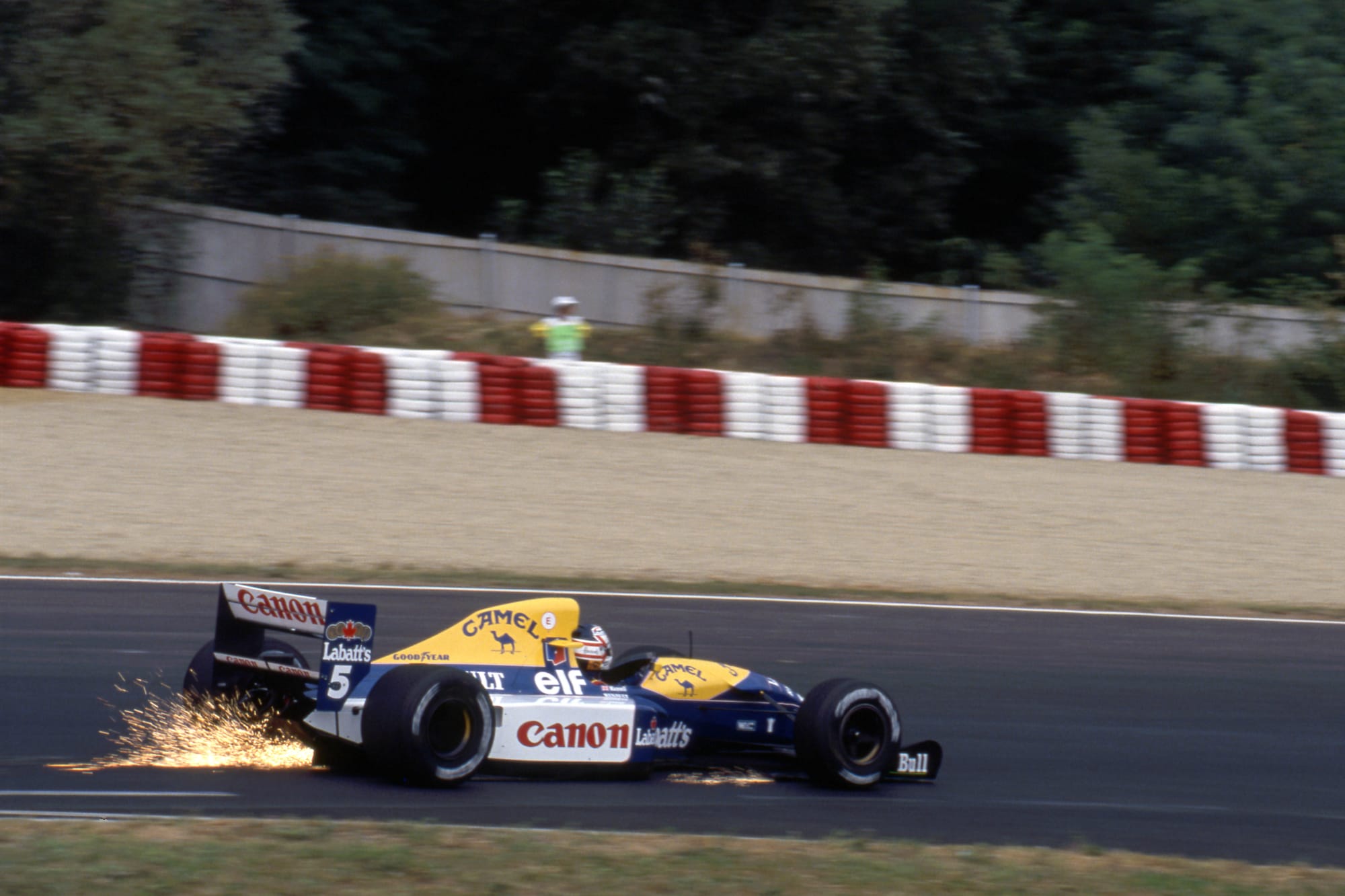
Silverstone's World Champions Collection is a reminder that there are many different ways to approach car design, and myriad factors that shape it. While for many years it was technology limited, in recent decades it has by necessity become increasingly defined by regulations.
Size matters, but it’s not a one-dimensional equation and focusing solely on size and weight numbers might be too narrow a horizon. It’s really all about proportions and, most importantly, dynamics on track.


